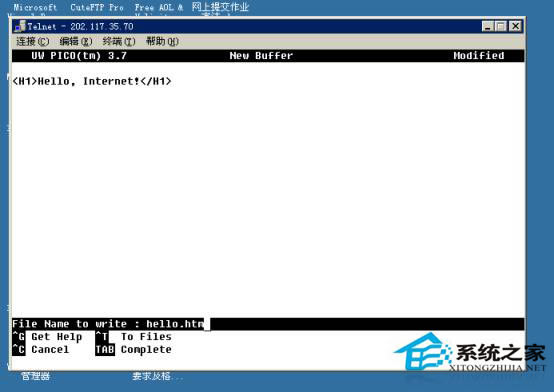UNIX怎么设置用户ID位?
在Linux系统中每一个进程都有好几个用户ID位,这些用户ID位怎么设置关系到文件访问的权限。本文就来以UNIX为例,简单介绍一下UNIX如何设置用户ID位。

用stat函数可以获取一个文件的状态信息,原型是这样的:
int stat(const char *path, struct stat *buf);
其中结构体stat的结构:
struct stat {
dev_t st_dev; /* ID of device containing file */
ino_t st_ino; /* inode number */
mode_t st_mode; /* protection */
nlink_t st_nlink; /* number of hard links */
uid_t st_uid; /* user ID of owner */
gid_t st_gid; /* group ID of owner */
dev_t st_rdev; /* device ID (if special file) */
off_t st_size; /* total size, in bytes */
blksize_t st_blksize; /* blocksize for file system I/O */
blkcnt_t st_blocks; /* number of 512B blocks allocated */
time_t st_atime; /* time of last access */
time_t st_mtime; /* time of last modification */
time_t st_ctime; /* time of last status change */
};
从传出的参数buf中可以拿到用st_uid,st_gid 表示的文件所有者ID,和文件所有者所在的组ID。
在UNIX进程中也有几组ID的概念。分别是实际用户ID,实际用户组ID,有效用户ID和有效用户组ID等等。当我们开始一个进程是,通常这个进程的有效用户ID就是这个进程的实际ID(比如我用eric用户登录,这个有效用户就我eric对应的ID)。然而当“设置用户ID位”打开以后,有效ID就是进程的程序文件对应的所有者的ID。
$ls -l 1.txt
-rw------- 1 root root 16 4月 29 14:31 1.txt
当前目录下面有一个文件“1.txt”是所有者root,并且只有root具有读和写权限。
1 int main()
2 {
3 int fd;
4 if((fd=open(“1.txt”,O_RDONLY)) == -1)
5 {
6 printf(“Open failed.\n”);
7 exit(-1);
8 }
9 char buf[1024]={0};
10 read(fd,buf,1024);
11 printf(buf);
12 printf(“\n”);
13 }
首先我在终端里使用su命令使用root用户。gcc read.c -omain。得到main程序。
# gcc read.c -omain
# exit
exit
$ main
Open failed.
显然main的所有者也是root,但是main程序依旧不可以打开“1.txt”,这是因为main启动后这个进程的有效ID是进程的实际用户ID(也就是eric账户的ID),而“1.txt”只对root用户具有读写权限,所以open失败。
把main的设置用户ID位打开可以用shell指令: chmod u+s main
我用的是c程序,主要代码如下:
1 struct stat buf = {0};
2 stat(“main”,&buf);
3 buf.st_mode = S_ISUID;
4 chmod(“main”,buf.st_mode);
执行后,main的“设置用户ID位”就打开了。再在非root终端下 执行main程序 就可以成功的读出 1.txt的内容
$ main
linuxidc.com
linux权限设计还是比较合理的,虽然这里main程序可以运行时是已所有者root的权限,但是这需要root用户的授权:打开这个程序文件的“set uid bit”(设置用户ID位)。只要在打开这个set uid bit 时充分考虑到这个程序存在的风险。当然授权需谨慎。
以上就是UNIX如何设置用户ID位的全部内容了,本文介绍了设置用户ID,设置用户ID也是文件权限设置的一个例子。
……